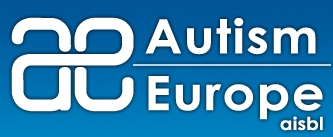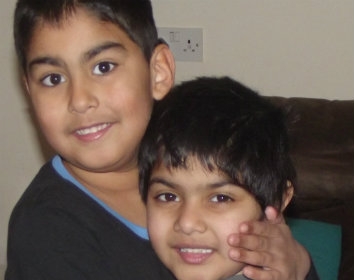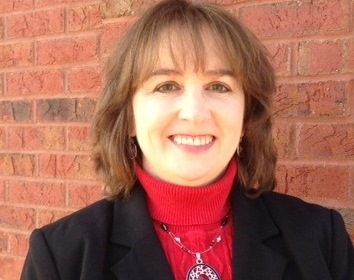Share Magazine Summer 2016
Bilingualism in Autism: Harmful or Beneficial?
26/05/2016
Sarah Hampton, Research Assistant, Patrick Wild Centre, University of Edinburgh
Direct research into how speaking or hearing more than one language effects the development of children with autism is scarce. This means that families have little information to help them when deciding whether or not to raise their child with autism bilingually – a pressing question for the increasing number of families in our community who speak multiple languages. More evidence that asks whether this “bilingual exposure” (i.e. hearing more than one language) might be harmful or beneficial to children on the spectrum is needed. As a foundation for this, we recently conducted a study at the University of Edinburgh exploring how 17 bilingual parents of children with autism (from a wide variety of language backgrounds) make choices about the languages their child heard and spoke. Based on the results of this study, and on the (limited) other published work in the area, the potential advantages and disadvantages of bilingualism for children with autism are outlined below.
What reasons are there not to raise a child with autism bilingually?
Many parents of children with autism in our study had concerns that exposing their child to more than one language would cause confusion and increase language delays. As a result, parents often dramatically reduced their child’s exposure to a second language after diagnosis. For instance, one parent commented, ‘I’m scared of putting in too much confusion, and he doesn’t understand anything at all. So, that’s why I just said, right OK, English and that’s it.’ Some parents reported that they were also advised by professionals to provide an English-only environment for their child. Unsurprisingly, for parents in our study, concerns about bilingualism were strongly related to their child’s speaking ability. Parents of more verbally able children tended to express more positive views of bilingualism, whereas those of children with limited speech showed greater concerns: ‘for any kid that’s like David or worse, when it comes to communication, no, I don’t think it’s a good idea to try several languages. It’s hard enough with the single one.’
Several parents in our study also felt that bilingualism would be a burden for the family as a whole. They told us that they needed to ‘keep things simple’ for their child and that maintaining two languages whilst doing so would be too much of a challenge for them. Speaking a second language other than English was also made challenging due to a lack of bilingual interventions and resources: ‘all his interventions were in English, so it made sense for us to reinforce that, rather than try and introduce another word’.
What reasons are there to raise a child with autism bilingually?
The idea that bilingualism is damaging for language learning in children with autism, while widespread, is not supported by the few studies conducted so far. Research has found no differences in vocabulary, communication skills and age of early language milestones when comparing children with autism exposed to either one or two languages. There is also evidence that children with autism can manage vocabulary in more than one language.
It is even possible that some of the ways that bilingualism helps typical children could also apply in autism. Bilingual children without autism tend to do better than monolinguals in some social and communication skills as well as flexible thinking. And in fact, one study showed that bilingual autistic children used more gestures to communicate than those exposed to one language.
This idea that bilingualism might yield benefits for those with autism was reflected in our study too.
Parents mentioned communication and flexibility as skills that could be enhanced by bilingualism. For instance, ‘Maybe it’s a safe way of explaining that different people have different rules, different languages have different rules, and it’s OK.’ and ‘I think the main, positive thing of being exposed to two languages is that he’ll go a bit further to make himself understood.’
Bilingualism may also contribute to emotional wellbeing and identity for children with autism. For many parents in our study, speaking a minority language (i.e. not English) was associated with expressions of affection, communication with the extended family and links to cultural identity: ‘especially when he wants to express his fondness to me he deliberately chooses Russian words’ and ‘the native languages are much closer to home, family, community, so that’s very important that I’m speaking to him in that language because I feel much closer to him.’
In addition, some parents said that speaking only English with their child could be restricting, as they did not want to pass on grammatical mistakes: ‘Sometimes I would like to say something to her and sometimes I stop, because I’m worried to say things incorrectly, so that she learn things incorrectly’. Exposure to the home language of their parents, then, might mean high quality emotional and linguistic input for children on the spectrum.
All in all, the (admittedly limited) research suggests bilingual exposure is not a problem for those with autism, though parents and professionals continue to have concerns. There are also some potential benefits, including cognitive advantages and high quality linguistic and social input. There is still a long way to go to establish a solid evidence base to help families make the right decision for them. Our findings point to the importance of considering not just language and learning consequences of bilingualism, but also factors such as family relationships and community integration, in future research.
Resources and Links
Reetzke, R., Zou, X., Sheng, L., & Katsos, N. (2015). Communicative development in bilingually exposed Chinese children with autism spectrum disorders. Journal of Speech, Language, and Hearing Research, 58, 813-825. http://dx.doi.org/10.1044/2015_JSLHR-L-13-0258
Hambly, C., & Fombonne, E. (2014). Factors influencing bilingual expressive vocabulary size in children with autism spectrum disorders. Research in Autism Spectrum Disorders, 8, 1079-1089. http://dx.doi.org/10.1016/j.rasd.2014.05.013
Comeau, L., Genesee, F., & Mendelson, M. (2007). Bilingual children’s repairs of breakdowns in communication. Journal of Child Language, 34, 159–174.
Kovács, Á. M. (2009). Early bilingualism enhances mechanisms of false-belief reasoning. Developmental Science, 12, 48-54.
http://dx.doi.org/10.1111/j.1467-7687.2008.00742.x
http://dx.doi.org/10.1111/j.1467-7687.2008.00742.x
Valicenti-McDermott, M., Tarshis, N., Schouls, M., Galdston, M., Hottinger, K., Seijo, R., ...Shinnar, S. (2013). Language differences between monolingual English and bilingual English-Spanish young children with autism spectrum disorders. Journal of Child Neurology, 28, 945-948.





